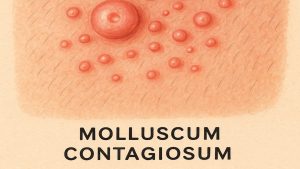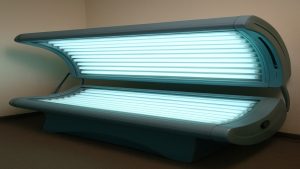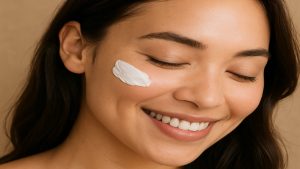- Atrophic scars are sunken skin depressions from collagen loss
- Types include ice pick, boxcar, and rolling scars
- Treatments include retinoids, peels, microneedling, and laser therapy
- Early acne treatment prevents severe atrophic scarring
- Monderma offers skincare to improve scars and pigmentation
Atrophic scars, such as ice pick, boxcar, and rolling scars, are common concerns that affect confidence and skin texture. Recognising their causes and available treatments helps individuals achieve smoother, healthier skin.
This article explains atrophic scars, distinguishes them from acne marks, and explores effective ways to treat and prevent them using both clinical and at-home skincare approaches.
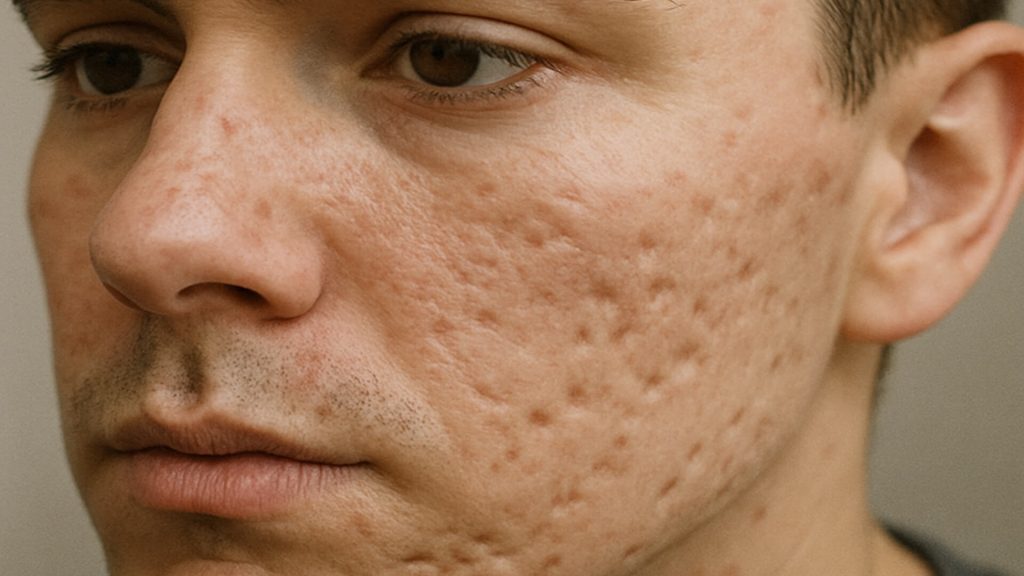
What Are Atrophic Scars?
Atrophic scars appear as indentations in the skin where tissue loss has occurred due to insufficient collagen during healing. They form after acne, surgery, or injury when the body cannot regenerate enough dermal tissue [1,2].
Unlike hypertrophic scars, which rise above the skin, atrophic scars sit below the surface, creating a shadowed appearance that can worsen with certain lighting.
Acne Marks Vs. Acne Scars
Atrophic scars differ from acne marks, also known as post-inflammatory hyperpigmentation. Acne marks are flat and discoloured but usually fade naturally over time. Scars, however, cause permanent texture changes that require active treatment.
Identifying the difference ensures the right approach, using topical brighteners for pigmentation versus structural treatments for scarring.
Types Of Atrophic Scars
Each scar type presents differently and may need distinct treatment methods:
Ice Pick Scars
Narrow and deep, these scars resemble small punctures in the skin. They often form after severe cystic acne and are among the hardest to treat.
Boxcar Scars
Broader and rectangular, boxcar scars have sharp edges and may be shallow or deep depending on collagen loss. Treatment effectiveness varies by depth.
Rolling Scars
Wavy, undulating scars result from damage below the surface and fibrous tissue pulling the skin inward. Subcision is especially effective for this type [3].
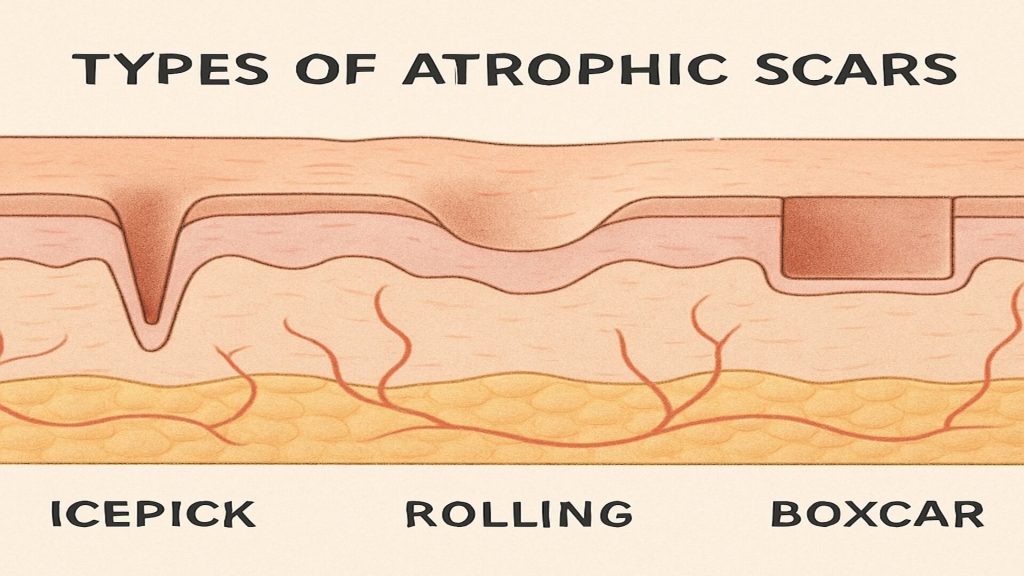
Causes Of Atrophic Scars
Atrophic scars form when inflammation or trauma disrupts collagen production. Key causes include:
- Acne Vulgaris: Chronic or cystic acne degrades collagen and damages tissue.
- Injury or Surgery: Improper healing from deeper wounds can lead to indentations.
- Chickenpox: Healed lesions may leave residual pitted scars.
Prompt acne management and proper wound care significantly reduce scarring risk.
Atrophic Scar Treatment Options
Treating atrophic scars often involves combining therapies to stimulate collagen, smooth texture, and improve tone.
Topical Treatments
Retinoid-based creams containing tretinoin or adapalene boost collagen and accelerate cell turnover. Over time, they help smooth fine depressions [7,8]. Monderma offers prescription retinoid formulations tailored to individual needs after a free online consultation.
Chemical Peels
Procedures such as CROSS (Chemical Reconstruction of Skin Scars) remove damaged surface layers and encourage new collagen growth. A 2002 study found medium-depth peels significantly improved atrophic scars in darker skin tones [4].
Microneedling
This minimally invasive treatment uses fine needles to trigger collagen production. Studies show microneedling, especially when combined with platelet-rich plasma (PRP), improves scar depth and texture [5].
Laser Therapy
Fractional CO₂ laser resurfacing promotes collagen synthesis and smooths the skin. A 2012 randomised trial confirmed marked improvement in atrophic acne scars using fractional CO₂ treatment [6].
Dermal Fillers
Injectable fillers like hyaluronic acid lift indented scars temporarily, especially boxcar and rolling types. Results are immediate but require maintenance over time.
Punch Techniques
Severe or deep scars may require surgical excision or punch grafting. These techniques replace or lift scar tissue for long-lasting correction under clinical supervision.
Summary Of Atrophic Scar Treatments
| Treatment | Summary |
|---|---|
| Topical Treatments | Retinoids and vitamins stimulate collagen and renew skin. |
| Chemical Peels | Exfoliate surface layers and smooth uneven texture. |
| Microneedling | Stimulates collagen with minimal downtime. |
| Laser Therapy | Resurfaces skin and refines scar depth. |
| Dermal Fillers | Temporarily raise sunken scars for smoother skin. |
| Punch Techniques | Surgically remove or replace deep scars. |
Table 1: Overview of treatment options for atrophic acne scars
Preventing Atrophic Scars
Preventing scars begins with early acne management and healthy healing habits.
- Treat Acne Early: Use prescription treatments promptly to avoid tissue damage.
- Avoid Picking or Squeezing: Reduces inflammation and prevents deep lesions.
- Follow Post-Surgery Care: Proper wound management aids collagen repair.
Balanced nutrition and hydration also support the body’s natural healing process [12].
Monderma’s Personalised Approach To Atrophic Scars
Monderma’s prescription skincare combines evidence-based ingredients to target scarring and pigmentation. Each formula is crafted by GPhC-registered prescribers following a free online consultation.
Preventing Scars With Early Acne Treatment
Monderma’s acne solutions, including adapalene, tretinoin, and clindamycin, reduce inflammation and bacterial growth to prevent new scars from forming.
Skincare For Mild Scars
For early or shallow atrophic scars, tretinoin or adapalene can rebuild collagen and refine texture within 12 weeks of consistent use.
Complementing In-Clinic Treatments
When used alongside professional procedures like microneedling or laser therapy, Monderma’s formulas support collagen repair and reduce post-procedure irritation with niacinamide and azelaic acid [9,10,11].
Managing Hyperpigmentation With Atrophic Scars
Hydroquinone-based Monderma blends target dark marks accompanying scarring. Combined care improves both colour and texture for a balanced complexion [9].
Affordable, Accessible Prescription Skincare
Monderma provides high-strength, prescription-only ingredients without private clinic costs. Free consultations and UK-wide delivery make advanced skincare accessible to those over 16.
Ongoing Care & Progress Tracking
Monderma’s ongoing care adjusts formulas as skin improves, ensuring long-term maintenance and continuous progress in scar reduction.
Monderma Ingredients That Help With Atrophic Scarring
| Ingredient | What It Is | How It Helps Atrophic Scarring |
|---|---|---|
| Tretinoin | A vitamin A derivative that promotes cell turnover. | Stimulates collagen to smooth and reduce scar depth [7,8]. |
| Adapalene | Synthetic retinoid that regulates cell renewal. | Boosts collagen to improve skin texture [7]. |
| Azelaic Acid | Anti-inflammatory exfoliating acid. | Smooths surface and fades hyperpigmentation [10]. |
| Niacinamide | Vitamin B3 compound supporting barrier function. | Enhances skin repair and evens tone [9]. |
| Hydroquinone | Skin-lightening ingredient. | Reduces pigmentation accompanying atrophic scars [9]. |
| Clindamycin | Topical antibiotic. | Prevents acne bacteria and new scar formation [11]. |
Table 2: Monderma ingredients that support atrophic scar improvement
Conclusion
Atrophic scars can be effectively treated with the right combination of medical treatments and personalised skincare. From retinoids and lasers to targeted formulas, patients have more options than ever to restore smoother, more even skin.
Monderma’s expert-prescribed skincare offers tailored solutions for atrophic scars, acne, and hyperpigmentation. Begin your personalised journey today with a free online consultation, and share this article to help others learn how to improve scarred skin with confidence.
Content is for informational purposes only. Monderma treatments are prescribed following consultation. Results and timeframes can vary. Use as directed by your prescriber.
Bibliography
- Goutos I. Atrophic Scars. Goutos London, 2024.
- Moon J, Yoon JY, Yang JH, et al. Atrophic Acne Scar: A Process from Altered Metabolism of Elastic Fibres and Collagen Fibres. Br J Dermatol. 2019.
- Alam M, Omura N, Kaminer MS. Subcision for Acne Scarring: Technique & Outcomes. Dermatol Surg. 2005.
- Al-Waiz M, Al-Sharqi A. Medium-Depth Chemical Peels in Acne Scars. Dermatol Surg. 2002.
- Ismail SA, Khella NAH, Abou-Taleb DAE. Microneedling vs PRP for Atrophic Scars. Dermatol Ther. 2022.
- Hedelund L, et al. Fractional CO₂ Laser Resurfacing for Atrophic Acne Scars. Lasers Surg Med. 2012.
- Medical-Aesthetics.sg. Retinoids & Acne: How Vitamin A Fights Scarring. 2024.
- Brickell Men’s Products. Retinol for Acne Scars. 2024.
- Navarrete-Solís J, et al. Niacinamide vs Hydroquinone in Melasma. Dermatol Res Pract. 2011.
- Marques C, et al. Mechanistic Insights into Niacinamide Functions. Antioxidants (Basel). 2024.
- Zaenglein AL, Pathy AL, Schlosser BJ, et al. Guidelines for Acne Management. J Am Acad Dermatol. 2016.
- Roengritthidet K, et al. Diet & Acne Severity Study. Acta Derm Venereol. 2021.
Find your perfect skincare formula
Takes less than 2 minutes – see what your skin needs
Get Custom Formula